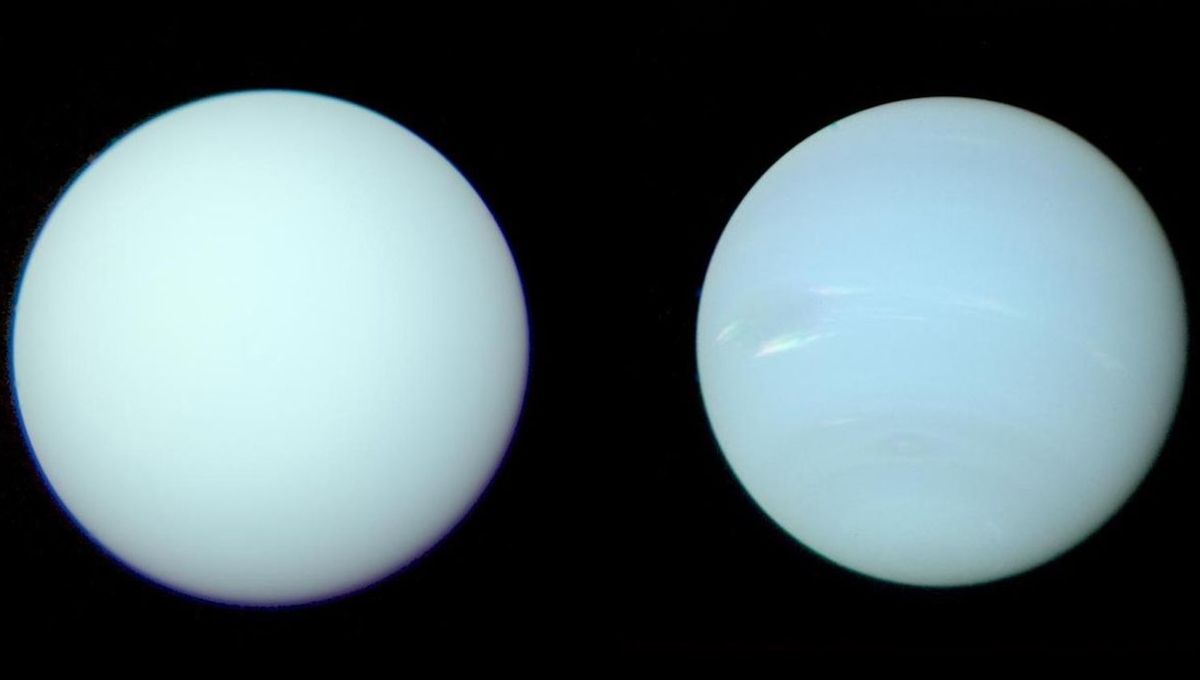
Astronomers have added three new moons to the Solar System. Both Uranus and Neptune have got new companions – well, new to us at least – although one was once observed back in 2002 before disappearing from our observations for 22 years. This brings the number of moons in our Solar System to 293.
The new Uranian moon is provisionally known as S/2023 U1. Being only 8 kilometers (5 miles) across, it is believed to be the smallest moon of the icy planet. It orbits Uranus in 680 days and it is officially the 28th moon known to go around it. It will eventually be given a proper name, picked from one of Shakespeare’s plays like all the other moons of the ice giant. S/2023 U1 was discovered on November 4, 2023, but it was then found in archival images of the planet. All were from ground-based telescopes.
“The three newly discovered moons are the faintest ever found around these two ice giant planets using ground-based telescopes,” the discoverer, Carnegie Science’s Scott S. Sheppard, said in a statement. “It took special image processing to reveal such faint objects.”
The detection of the Neptune moons had a more convoluted process. One of them was first seen in 2002 and then seen again in 2021. The second was discovered in 2021 as well. But it took several observations, including with some of the most sensitive ground-based telescopes on the planet. Neptune is 1.5 times further away from the Sun than Uranus, so observations are trickier.
And these moons are small. The brighter of the two, S/2002 N5, is 23 kilometers (14 miles) in size and it goes around the planet every nine years. S/2021 N1 is around 14 kilometers (8.6 miles) and has an orbit of almost 27 years. They will be named after Nereids, sea nymphs in Greek mythology. There are now 16 confirmed moons of Neptune.
“Once S/2002 N5’s orbit around Neptune was determined using the 2021, 2022, and 2023 observations, it was traced back to an object that was spotted near Neptune in 2003 but lost before it could be confirmed as orbiting the planet,” Sheppard explained.
The discovery of these moons shows that all giant planets in the Solar System have similar configurations of distant moons captured by gravity. All four giants had wildly different histories and yet they all showcase the same arrangement of distant satellites.
“Even Uranus, which is tipped on its side, has a similar moon population to the other giant planets orbiting our Sun,” Sheppard explained. “And Neptune, which likely captured the distant Kuiper Belt object Triton– an ice rich body larger than Pluto – an event that could have disrupted its moon system, has outer moons that appear similar to its neighbors.”
The observations allow astronomers to state that no new moons around Uranus and Neptune exist that are larger than 8 and 14 kilometers respectively. For Jupiter and Saturn, the limit is much lower, with 2 and 3 kilometers (1.2 and 1.8 miles) as the largest possible new moons yet to be discovered.
Source Link: Uranus Gets First New Moon In 20 Years While Neptune Gets Two More